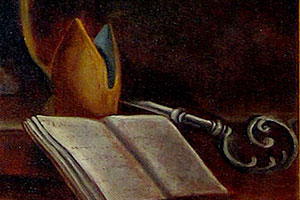The Church of Sant’Agostino
Birth of the Order
Some Chartae report that it was these very hermits of ancient Tuscia who asked the pope for permission to gather together into a collective organization and have a recognized rule. The friars in the various hermitages followed general customs, gave up their private property, and committed themselves to obeying the regulations for daily life, but they did not have any specific rules concerning, for example, the recitation of the Divine Office. In 1243, with the papal bull Incumbit Nobis, Pope Innocent IV prepared a first Little Union of the Hermitic Communities of Tuscany, anticipating by thirteen years the Grand Union proclaimed in 1256 by Alexander IV. This Grand Union, promoted by Cardinal Riccardo Annibaldi, formally defined the Order of the Hermit Friars of Saint Augustine, which besides the Tuscan groups brought together also the Orders of the Hermits of Saint William, Saint John the Good, Montefavale, and Brittin. The birth of this new religious family answered a dual need. The first was connected with a program of reforms, initiated by Pope Innocent III in 1215, aimed at stamping out the groups of preachers independent from the Church, while the second aimed at consolidating community life, giving value to poverty and apostolic activity. The new friars adhered to the Rule of Saint Augustine and gradually modeled their organization on the example of the other two mendicant . . .



